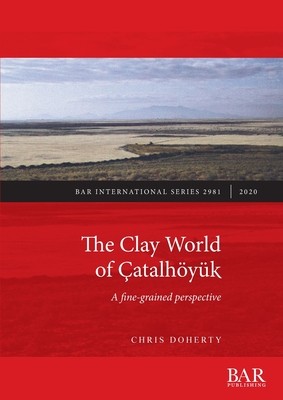
- We will send in 10–14 business days.
- Author: Chris Doherty
- Publisher: British Archaeological Reports (Oxford) Ltd
- ISBN-10: 1407354221
- ISBN-13: 9781407354224
- Format: 21 x 29.7 x 1 cm, minkšti viršeliai
- Language: English
- SAVE -10% with code: EXTRA
Reviews
Description
This book addresses a paradox concerning the role of clay at Ãatalhöyük that arises from conflicting material culture and landscape views of what clay truly afforded this early agricultural community. The highly-developed and artistically rich clay-based material culture points to clay being a major contributor to the site's success. However, the underlying thick, impermeable clay beds are also thought to have impeded the drainage of seasonal floods, periodically isolating the community in extensive wetlands and clearly hostile to early agriculture. A landscape re-appraisal is made based on the recognition that the heavier clay artifacts must have been locally sourced and can therefore be read as direct samples of the local Neolithic landscape. The result is a revised landscape interpretation that no longer conflicts with the observed patterns of clay use or broader subsistence practice at Ãatalhöyük. Clay's role is re-examined in this revised landscape context to demonstrate a fuller and more complex picture than previously thought.
EXTRA 10 % discount with code: EXTRA
The promotion ends in 23d.12:53:19
The discount code is valid when purchasing from 10 €. Discounts do not stack.
- Author: Chris Doherty
- Publisher: British Archaeological Reports (Oxford) Ltd
- ISBN-10: 1407354221
- ISBN-13: 9781407354224
- Format: 21 x 29.7 x 1 cm, minkšti viršeliai
- Language: English English
This book addresses a paradox concerning the role of clay at Ãatalhöyük that arises from conflicting material culture and landscape views of what clay truly afforded this early agricultural community. The highly-developed and artistically rich clay-based material culture points to clay being a major contributor to the site's success. However, the underlying thick, impermeable clay beds are also thought to have impeded the drainage of seasonal floods, periodically isolating the community in extensive wetlands and clearly hostile to early agriculture. A landscape re-appraisal is made based on the recognition that the heavier clay artifacts must have been locally sourced and can therefore be read as direct samples of the local Neolithic landscape. The result is a revised landscape interpretation that no longer conflicts with the observed patterns of clay use or broader subsistence practice at Ãatalhöyük. Clay's role is re-examined in this revised landscape context to demonstrate a fuller and more complex picture than previously thought.


Reviews